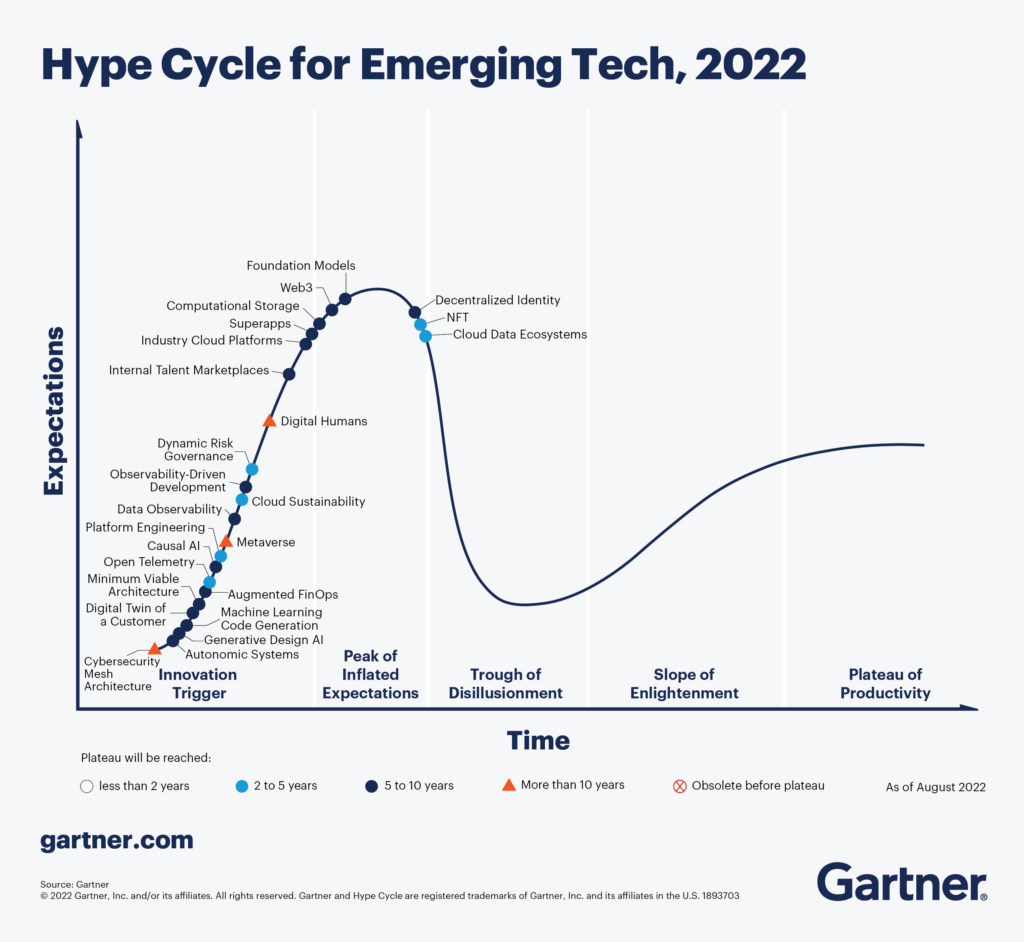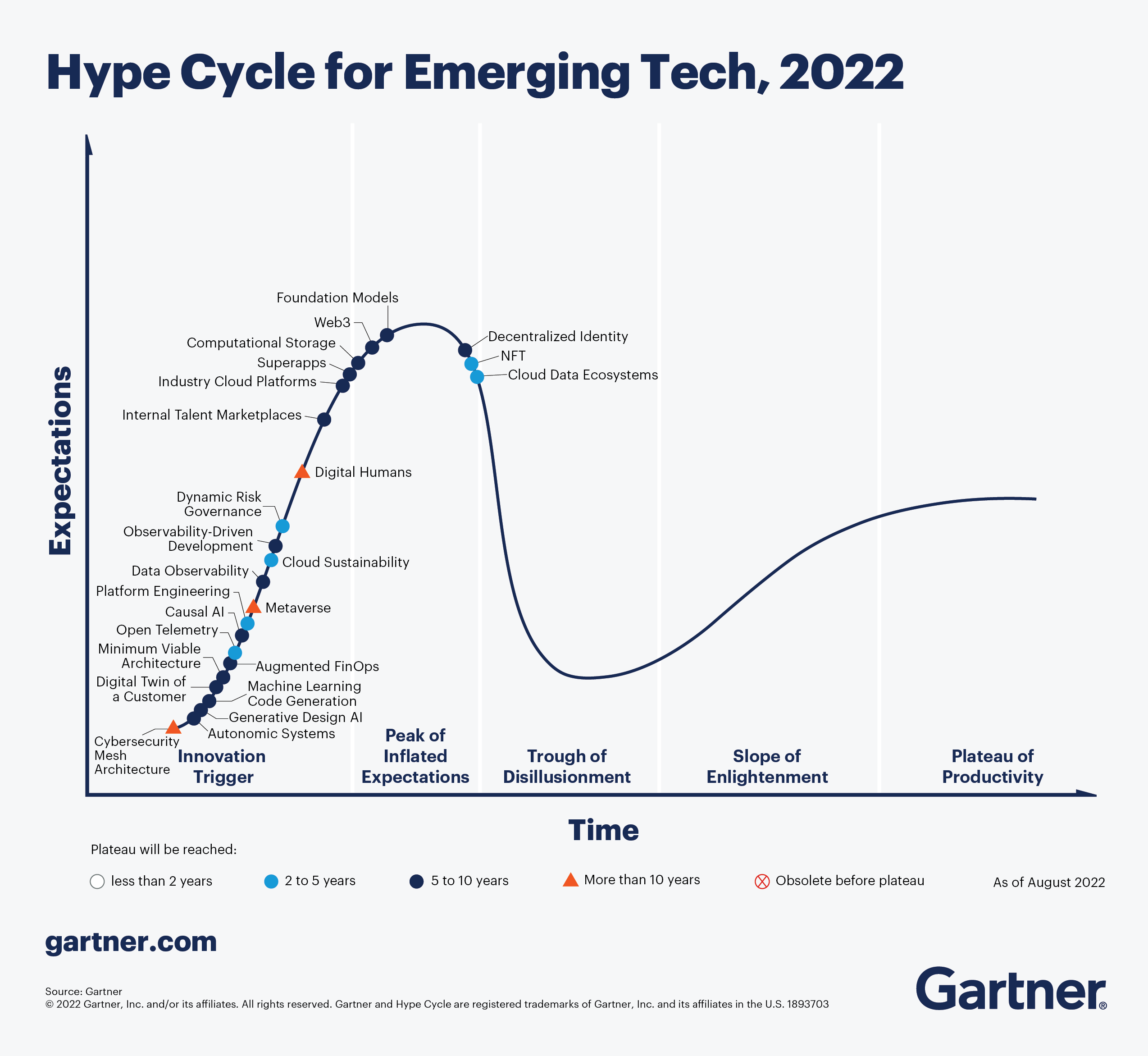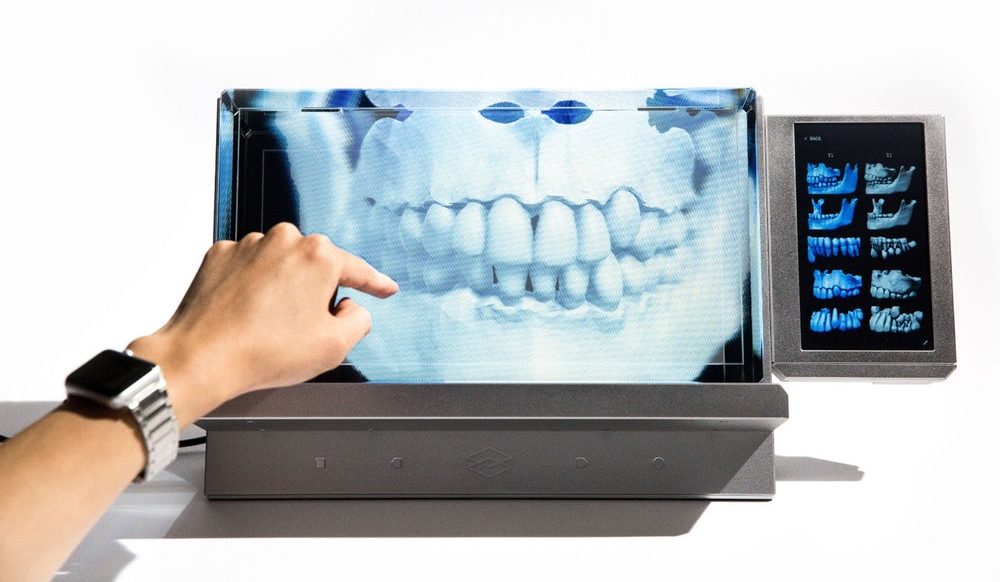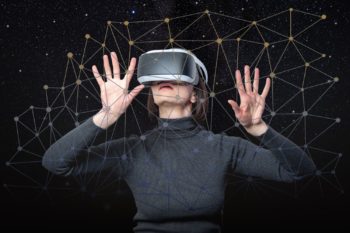Emerging technologies for 2022 fit into three main themes: evolving/expanding immersive experiences, accelerated artificial intelligence automation, and optimized technologist delivery.
In short:
- The 2022 Gartner Hype Cycle™ for Emerging Technologies features 25 “must-know” innovations to drive competitive differentiation and efficiency.
- Only a few are likely to reach mainstream adoption in as little as two years; many will take 10 years or more.
- The embryonic nature of the technologies makes them more risky to deploy, but the benefits for early adopters are potentially greater.
The 2022 Gartner Hype Cycle identifies 25 must-know emerging technologies designed to help enterprise architecture and technology innovation leaders:
- Expand immersive experiences
- Accelerate artificial intelligence (AI) automation
- Optimize technologist delivery
These technologies are expected to greatly impact business and society over the next two to 10 years, but will especially enable CIOs and IT leaders to deliver on digital business transformation.
Download Now: 2021-2023 Emerging Technology Roadmap for Large Enterprises

…
Three Hype Cycle themes to think about in 2022 and beyond
The 2022 Gartner Hype Cycle features emerging technologies and distills insights from more than 2,000 technologies into a succinct high-potential set. Most technologies have multiple use cases but enterprise architecture and technology innovation leaders should prioritize those with the greatest potential benefit for their organization. (They will also need to launch a proof-of-concept project to demonstrate the feasibility of a technology for their target use case.)
Here’s more about the three themes under which the 2022 technologies fall:
Theme 1: Evolving/expanding immersive experiences
The benefit of these technologies is that they provide individuals with more control over their identities and data, and expand their range of experiences into virtual venues and ecosystems that can be integrated with digital currencies. These technologies also provide new ways to reach customers to strengthen or open up new revenue streams.
Digital twin of the customer (DToC) is a dynamic virtual representation of a customer that simulates and learns to emulate and anticipate behavior. It can be used to modify and enhance the customer experience (CX) and support new digitalization efforts, products, services and opportunities. DToC will take five to 10 years until mainstream adoption but will be transformational to organizations.
Other critical technologies in immersive experiences include the following:
- Decentralized identity (DCI) allows an entity (typically a human user) to control their own digital identity by leveraging technologies such as blockchain or other distributed ledger technologies (DLTs), along with digital wallets.
- Digital humans are interactive, AI-driven representations that have some of the characteristics, personality, knowledge and mindset of a human.
- Internal talent marketplaces match internal employees and, in some cases, a pool of contingent workers, to time-boxed projects and various work opportunities, with no recruiter involvement.
- Metaverse is a collective virtual 3D shared space, created by the convergence of virtually enhanced physical and digital reality. A metaverse is persistent, providing enhanced immersive experiences.
- Non-fungible token (NFT) is a unique programmable blockchain-based digital item that publicly proves ownership of digital assets, such as digital art or music, or physical assets that are tokenized, such as houses, cars or documents.
- Superapp is a composite mobile app built as a platform to deliver modular microapps that users can activate for personalized app experiences.
- Web3 is a new stack of technologies for the development of decentralized web applications that enable users to control their own identity and data.
…
Quelle:



